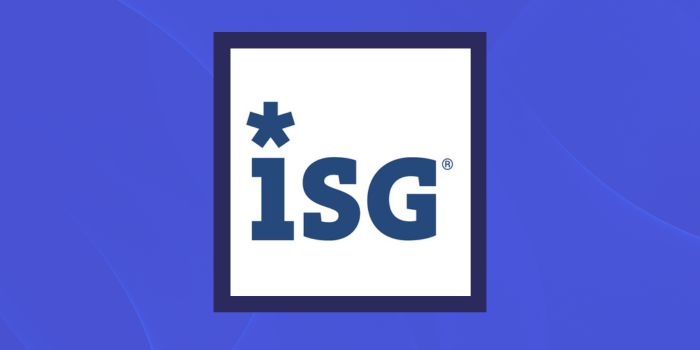Steps and Considerations to Build a Successful Business Resilience Plan
Learn the essential steps and considerations for building a business resilience plan.
Business Continuity, Data Protection, Disaster Recovery


Resilience plans are designed to help organizations adapt quickly to risks and disruptions, while maintaining key business workflows and safeguarding data, assets, and brand reputation. They ensure that businesses remain working regardless of external factors. While these plans are an essential part of protecting your business, sometimes knowing where to start is the hardest part.
Here, we’ll outline the essential steps and considerations for building a business resilience plan.
The Importance of the Plan
Risks that impact IT resilience continue to grow and the challenge of creating a sustainable program can be overwhelming. The proliferation of ransomware has significantly increased the overall risk to businesses. Having a well thought out plan that has been put to the test and validated is essential to protecting your organization from risk and disruption. The stark reality is that more often than not, business expectations are not in sync with IT recovery capabilities. As an organization, it’s critical to assess how much data you can afford to lose and how long you can afford to be down. What you will likely find is that the answers to those essential questions and the reality of your current disaster recovery capabilities do not align.
According to a recent Gartner survey, 86% of I&O leaders self-assessed their recovery capabilities as meeting or exceeding CIO expectations. Yet only 27% of that group consistently undertook three of the most basic elements expected of a DR program:
- Formalizing Scope
- Performing a Business Impact Analysis (BIA) to acquire business requirements
- Creating detailed recovery procedures
This means 54% of those surveyed have a misconception or an overconfidence that they can truly recover. According to the same survey, those with a solid disaster recovery program are 40% more likely to demonstrate a stronger overall resilience posture in other areas of reliability and tolerability.
Getting Started: Questions and Considerations
According to the IT Service Management Forum, a disaster is defined as an event that affects a service or system such that significant effort is required to restore the original performance level. This can mean different things to different organizations. It’s important to address the following questions at the outset of the plan development process to ensure stakeholders are on the same page:
- What does a disaster look like in our environment?
- What disaster and recovery scenarios should we plan for?
- Where do we begin?
- How do we do it?
Business Continuity vs. Disaster Recovery vs. Operational Recovery
The technology landscape is riddled with acronyms, and resilience is no exception – BC, DR, OR, say what? Business Continuity, Disaster Recovery, and Operational Recovery are important pieces to the puzzle and are all unique. Each should have its own clearly defined objectives, and at a minimum, you should know the difference between them. Here’s an overview:
Business Continuity
Business continuity is about having a plan to deal with difficult situations, so your organization can continue to function with as little disruption as possible. The goal with business continuity is to have all go on as normal despite an incident, without any impact to business operations (active/active sites).
Disaster Recovery
Disaster recovery is an organization’s method of regaining access and functionality to its IT infrastructure after events like a natural disaster, cyber-attack, or even business disruptions. The goal is to cope with and recover from an IT crisis that moves work to an alternative system in a non-routine way. DR typically implies failure of the primary data center and recovery to an alternate site.
Operational Recovery
Operational recovery is the recovery of specific parts of the IT infrastructure in the case of an IT failure or relatively minor incident. This addresses more “routine” types of failures (server, network, storage, etc.) and typically implies recovering to alternate equipment within the primary data center.
IT Resilience Building Blocks
When you are designing for a disaster, it’s important to start with the basics to get a handle on what you aim to achieve. Aligning your business and executives with what the scope should be for disaster recovery is key. For example, are you looking to prepare for a single system failure or a full data center failover?
The essential building blocks for forming your plan include the following initiatives:
1. Define Key Measures – RPO & RTO
Recovery Point Objective (RPO): This is the maximum acceptable amount of data loss that is measured in time. For example, if the RPO is 30 minutes, data must be backed up at least every 30 minutes.
Recovery Time Objective (RTO): This is the maximum length of time that is deemed acceptable between a potential failure or attack and the resumption of normal operations. This takes into account how long it takes to bring critical systems and applications back up to a useable state, regardless of the age of the data (RPO).
2. Outline Risk Scenarios
It’s important to identify the risk scenarios most relevant to your business so you can properly prepare. This step can be challenging with a threat landscape that is constantly evolving. Some common scenarios include cybercrime, hardware failure, human error, insider threats, corrupt files and software failure, and natural disasters.
3. Identify Your Team and Responsibilities
Your plan should identify who in the organization is responsible for disaster recovery processes including performing ongoing backups and maintaining business continuity systems, declaring a disaster, contacting third-party vendors, reporting a disaster to management, and managing and recovering from the incident.
4. Run a Business Impact Analysis (BIA)
A business impact analysis (BIA) is the process of determining the criticality of business activities and associated resource requirements to ensure operational resilience and continuity of operations during and after a business disruption. The BIA quantifies the impacts of disruptions on service delivery, risks to service delivery, and recovery time objectives (RTOs) and recovery point objectives (RPOs).
5. Document the Plan
Once the plan is complete, make sure it is documented and detailed enough for the broader team to understand. Vacations happen, illnesses happen, people change jobs. Don’t let your resilience plan live in a spreadsheet or an individual’s mind. It’s critical that in the event of a disaster, team members can step up and takeover if necessary.
6. Test Your Plan, Regularly
Regular recovery validation testing should be completed to ensure your critical data will be there when it’s needed most. Consider increasing the frequency of your testing and use automation when you can. As time in between tests increases, so does your risk.
Next Steps: Build a Resilience Plan that’s Ready for Anything
If your business doesn’t have clear answers to the questions outlined above, there’s work to be done – and the sooner, the better. If you need assistance building your resilience plan or evaluating your disaster recovery capabilities, Recovery Point can help. Recognized by Gartner for the past 7 years as a leader in DRaaS for best-in-class solutions, flexibility, and service excellence, Recovery Point has what it takes to address all your hybrid IT and business resilience requirements. We have the experts, the technology, and the platform built to ensure resiliency and recovery across changing cyber threats and technology environments.
To learn more about building a resilience plan that’s ready for anything, check out our recent webinar with Pure Storage: Steps and Considerations to Build a Successful Business Resilience Plan
You Might Also Like
Contact
For more information please call 877.445.4333


